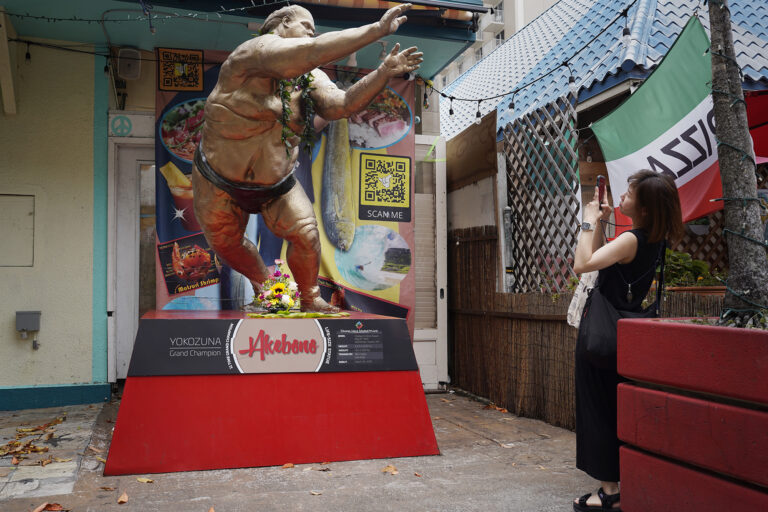It is widely known that tourism accounts for nearly a quarter of Hawaii’s overall economy. The economic impact of tourism plays a significant role for the neighboring islands, especially as it accounts for an even larger portion of the economy compared to Oahu.
For decades, Japanese tourists made up the majority of foreign visitors to the islands. For obvious reasons, Japan’s proximity, the variety of options in air interconnection between Tokyo and Honolulu, and a thriving Japanese economy allowed a steady flow of tourists from Japan to Hawaii.
The COVID-19 pandemic has completely changed this dynamic, with tourism from Japan plummeting and the economy in the same situation.
But the Hawaii Tourism Authority is still working on targeted campaigns for Japan, including initiatives such as “Beautiful Hawaii” and “It’s Hawaii After All,” as well as “an integration of digital and television advertising, social media, earned media, partnerships and trade education,” according to an April 30 release from the HTA.
Instead of relying on uncertainties in Japan, the HTA should focus on diversifying Hawaii’s inbound tourism market.
At its pre-pandemic peak in 2019, Japan maintained its position as Hawaii’s top international traveler, bringing in about 1.6 million visitors alone, according to HTA’s 2022 Annual Visitor Survey Report. By 2022, Japan brought fewer than 200,000 visitors to Hawaii, a staggering 87% decline.
The percentage change from 2020 to 2022 decreased by 33.4%. According to HTA’s recent March 2024 Tourist Statistics Report, the number of Japanese tourists is still down 53% compared to pre-pandemic levels.
Japan’s strict COVID-19 guidelines and travel restrictions have also had a major impact on the economy. About a year ago, one dollar was worth 137 Japanese yen, but now one dollar is worth 155 Japanese yen. The Japanese yen has fallen 12% against the dollar since last year, but this is only discouraging travel, as Japanese people tend to save and spend less in this inflationary period.
Canada has since overtaken Japan to become the world’s number one destination for international visitors to Hawaii, with 414,000 people visiting Hawaii, up from 540,000 before the pandemic. From 2020 to 2022, the number of Canadians visiting the Hawaiian Islands increased by 152%. During the same period, tourists from countries outside Northeast Asia increased by 102.5%, with South Korea increasing by 139% and Australia by 276%.
Economically, the Australian dollar, Singapore dollar, and Canadian dollar are all trading at more favorable exchange rates than the Japanese yen compared to the same period last year. Japan’s neighbors, South Korea and China, also have relatively stable currencies, with their currencies falling by just 2% and 3% against the US dollar last year, compared to 12% for Japan.
The HTA should focus on these tourism markets first, rather than relying too heavily on Japan as it has done in the past.

 Japan’s economy and other factors have led to fewer visitors to Hawaii, while other countries have seen an increase in visitors to the islands. (Cory Lamb/Civil Beat/2017)
Japan’s economy and other factors have led to fewer visitors to Hawaii, while other countries have seen an increase in visitors to the islands. (Cory Lamb/Civil Beat/2017)
Before these networks withdrew from Honolulu Airport, there were connections to South Korea through Jin Air, Singapore’s Scoot Air, and Malaysia’s AirAsia. State governments should encourage airlines from countries in the Asia-Pacific region to work with Honolulu Airport to build new pipelines and rebuild old ones to diversify the inbound tourist market. is.
This could start with lowering airline barriers to entry at HNL, such as overseas landing, airport system support, terminal rental, shared use area fees, and other variable fees. For example, a Signature Airlines plane costs $4.92 per 1,000 pounds. A Boeing 777 is about 775,000 pounds, so the overseas landing fees alone work out to about $3,813 per plane.
Honolulu Airport is the eighth most expensive airport in the country to operate flights, behind airports such as San Francisco, Los Angeles, and New York. Additionally, if the airline is a non-member airline, expect to pay an additional 25% on each fare.
From my experience living and traveling in most of the Asian region (outside of Japan), it is clear to me that Hawaii travel marketing is primarily limited to digital advertising and word of mouth. In parallel with attracting tourists from other destination countries, HTA marketing should focus on encouraging travelers to come to Hawaii on their holidays, especially those that have holidays during Hawaii’s off-season travel (Chuseok in Korea, Anzac Day in Australia, National Day in Singapore, etc.).
Similar to the Hong Kong Tourism Board’s recent initiative, the HTA should also consider partnering with restaurants, bars, attractions, hotels and retailers to offer visitor spending vouchers to attract tourists from these countries to Hawaii and spend there.
We need to revitalize Hawaii’s overseas tourist market. This requires shifting the focus from Japan to other relatively economically powerful countries in the region. However, Hawaii will need to devote significant resources to this pivot, including increasing air connectivity, lowering barriers to entry for airlines, and increasing targeted marketing campaigns to these markets. there is.
Sign up for our free morning newsletter to stay more informed every day.
sign up
sorry. That’s an invalid email.
Thank you! You will receive a confirmation email shortly.


